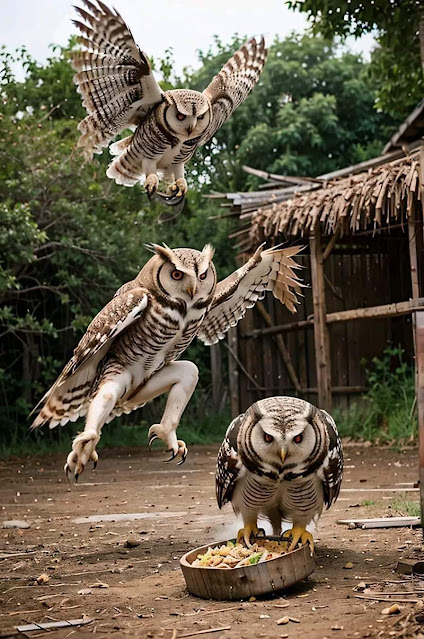Owls are fascinating creatures! Did you know that they can rotate their heads up to 270 degrees? This is possible due to their flexible neck arteries that prevent blood flow interruption when turning. Additionally, owls are known for their silent flight, thanks to specialized feathers that reduce turbulence.
Owls are remarkable hunters with specialized adaptations. Their facial discs help funnel sound to their ears, allowing them to locate prey with exceptional precision. Also, owls have asymmetrical ear placements, aiding in pinpointing the source of sounds accurately. Some owl species, like the barn owl, have unique heart-shaped facial patterns.
Owls have excellent low-light vision, adapted for hunting during dusk and dawn. Their large eyes are fixed in their sockets, but they can rotate their heads almost completely, compensating for limited eye movement. Additionally, owl feathers have serrated edges, reducing aerodynamic noise during flight and enhancing their stealth as nocturnal predators.
Delving deeper into the intricate world of owls, their adaptations unveil a masterclass in evolutionary brilliance. These avian predators boast feathers with serrated edges, akin to a finely tuned comb, minimizing the disturbance of air during flight and rendering them virtually silent in pursuit of prey. It's a symphony of survival: silent wings cutting through the night air, eyes keenly fixed on the slightest movement below.
Owls' large eyes, while impressive, serve a dual purpose beyond their striking appearance. Adapted for low-light conditions, these orbs capture even the faintest glimmer of starlight or moonshine, affording owls unparalleled vision during the darkest hours. Their eyes, encased in a protective bony ring, cannot rotate independently like ours, yet their ability to turn their heads with such flexibility compensates, creating an illusion of a seamless, almost eerie, gaze.
Nestled within ancient woodlands or perched high in the mountains, owls are not merely creatures of the night; they are stewards of ecosystems. As apex predators, they regulate prey populations, contributing to the delicate balance of nature. Yet, encroaching urbanization, deforestation, and climate change pose formidable challenges to their existence.
In our journey through the shadows, we'll unravel not just the physiological wonders of owls but also the urgent narrative of their conservation. For, in understanding these nocturnal marvels, we find not only the poetry of nature but a call to action to preserve the ethereal symphony of the night.
Protecting owls involves preserving their habitats and raising awareness about their importance in ecosystems. Here are some ways to help:
1. Preserve Habitats: Support and participate in conservation efforts to protect the natural habitats where owls live. This includes forests, grasslands, and wetlands.
2. Avoid Pesticides: Pesticides can harm owl populations indirectly by reducing their prey. Choose environmentally friendly pest control methods to minimize the impact on the owl's food sources.
3. Educate Others: Spread awareness about the importance of owls in maintaining ecological balance. Educate people about the threats owls face and how they can contribute to conservation.
4. Nesting Sites: Protect and maintain natural nesting sites. If feasible, install owl nest boxes in suitable areas to provide additional nesting options.
5. Responsible Birding: If you enjoy birdwatching, practice responsible and ethical birding. Keep a respectful distance from nesting sites and avoid disturbing owls during sensitive times, such as breeding season.
6. Support Conservation Organizations: Contribute to or volunteer with organizations dedicated to owl conservation. These groups work on research, habitat protection, and public education.
7. Monitor and Report: Keep an eye on local owl populations. If you observe any unusual behavior or notice threats to their habitats, report it to relevant wildlife authorities or conservation organizations.
By taking these steps, you can contribute to the well-being of owl populations and help maintain the balance of ecosystems they inhabit.
Photo belongs to respective owners.









Comments
Post a Comment